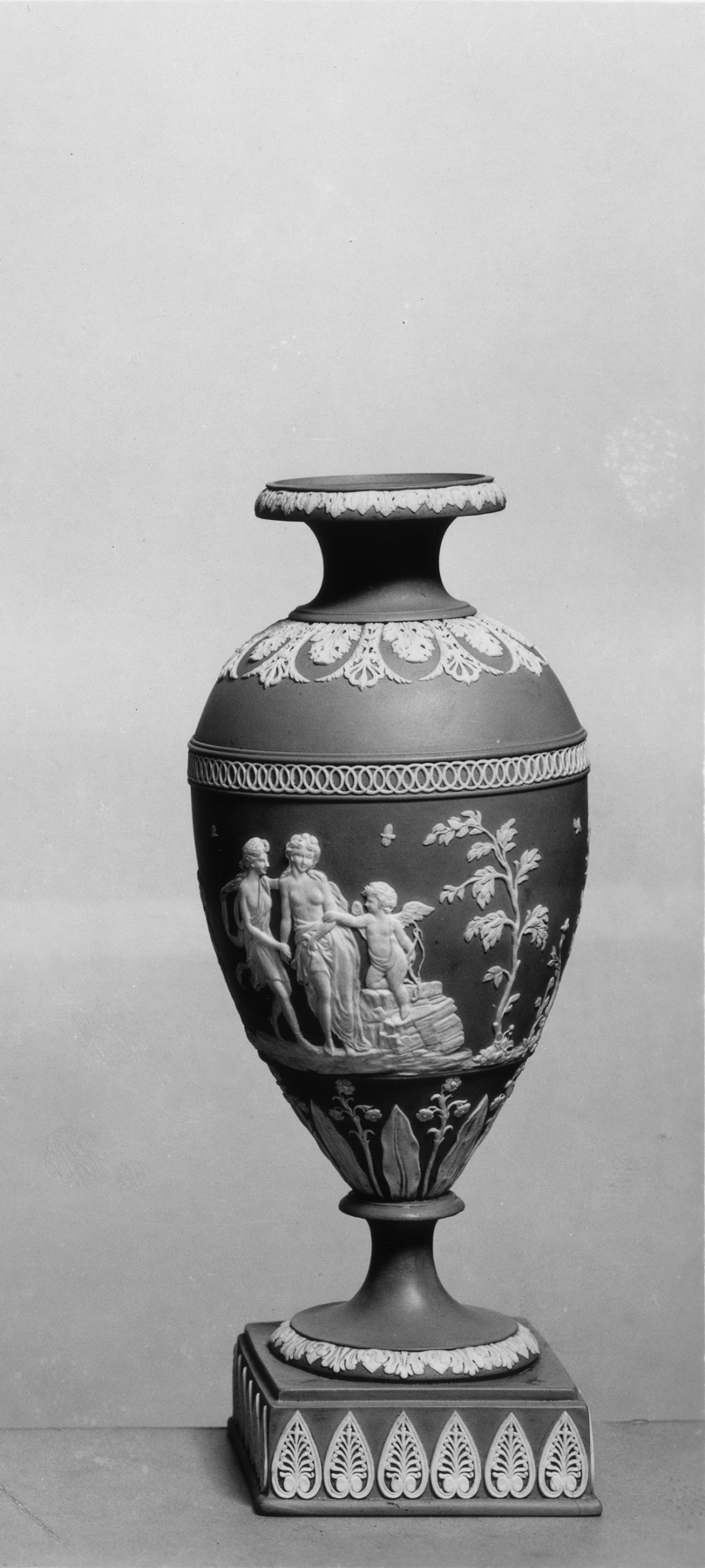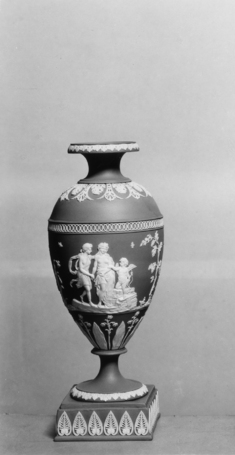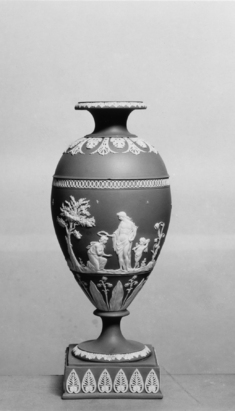Vase with Apollo, a Nymph, and Cupid
(18th and 19th Centuries )
The designs on these three urns are decorated with scenes showing Apollo, nymphs, and cupid. They were made at the factory of William Adams, a contemporary, friend and follower of Josiah Wedgwood. Adams was associated with Wedgwood when he opened his famous factory at Etruria in 1769. He experimented with pottery and fitted up a private laboratory at his house at Tunstall, where he continued his research in the chemistry of pottery to the end of his life.
Adams was responsible for a great quantity of excellent jasper ware, in some of which the ground colors differ perceptibly from that made at the Wedgwood factories.
This vase is one of a group of three with 48.858 and 48.859, although it is slightly larger than this pair.
Provenance
Provenance (from the French provenir, 'to come from/forth') is the chronology of the ownership, custody, or location of a historical object. Learn more about provenance at the Walters.
Henry Walters, Baltimore, Horace Townshend Sale, New York, 1914, by purchase; Walters Art Museum, by bequest, 1931.
Geographies
England, Staffordshire, Etruria (Place of Origin)
Measurements
H: 10 7/8 in. (27.6 cm)
Credit Line
Acquired by Henry Walters
Location in Museum
Not on view
Accession Number
In libraries, galleries, museums, and archives, an accession number is a unique identifier assigned to each object in the collection.
In libraries, galleries, museums, and archives, an accession number is a unique identifier assigned to each object in the collection.
48.860




